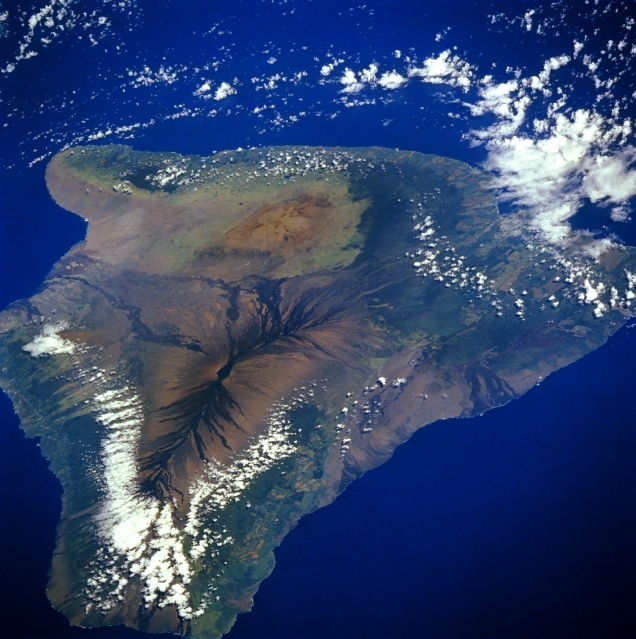Part D
Mantle Plume Hot Spots
Hot spots are areas on tectonic plates that are located above fixed columns of hot, rising mantle or mantle plumes (see Figure 10-15). As the tectonic plate (either oceanic or continental) moves over the mantle plume, "hot spot" volcanism occurs. On oceanic plates, large basaltic shield volcanoes may form (like at Hawaii in Figure 10-17), whereas on continental plates, volcanism is commonly bimodal (both felsic and mafic) with large caldera structures that produce tremendous ashflow volcanic deposits. As the plate carries the older volcanoes off the hotspot, a hot spot trace forms that records the direction of plate movement over time. Since the mantle plumes are fixed in location, they can be used to determine the movement rate and direction of the overriding tectonic plates.
|
|
|
Figure 10-17. The big island of Hawaii as seen from the Space Shuttle Challenger (STS-61A) in 1985 (NASA). |
Answer Quiz Me! questions D41 through D50 using The Earth's Fractured Surface map (see the PDF link below).
|
The Earth's Fractured Surface |
![]()
![]()
![]()
Notice that the Hawaiian ridge and Emperor seamounts together form an elbow-shaped feature on the Pacific plate. This is a hot spot trace formed as the Pacific plate moved over a (mostly) stationary plume of hot, rising rock in the Earth's mantle. Hot spots and the traces they create are used to calculate the rate of tectonic plate movement.
![]()
![]()
![]()
![]()
![]()
![]()
![]()
After finishing this lesson, complete the form below:
